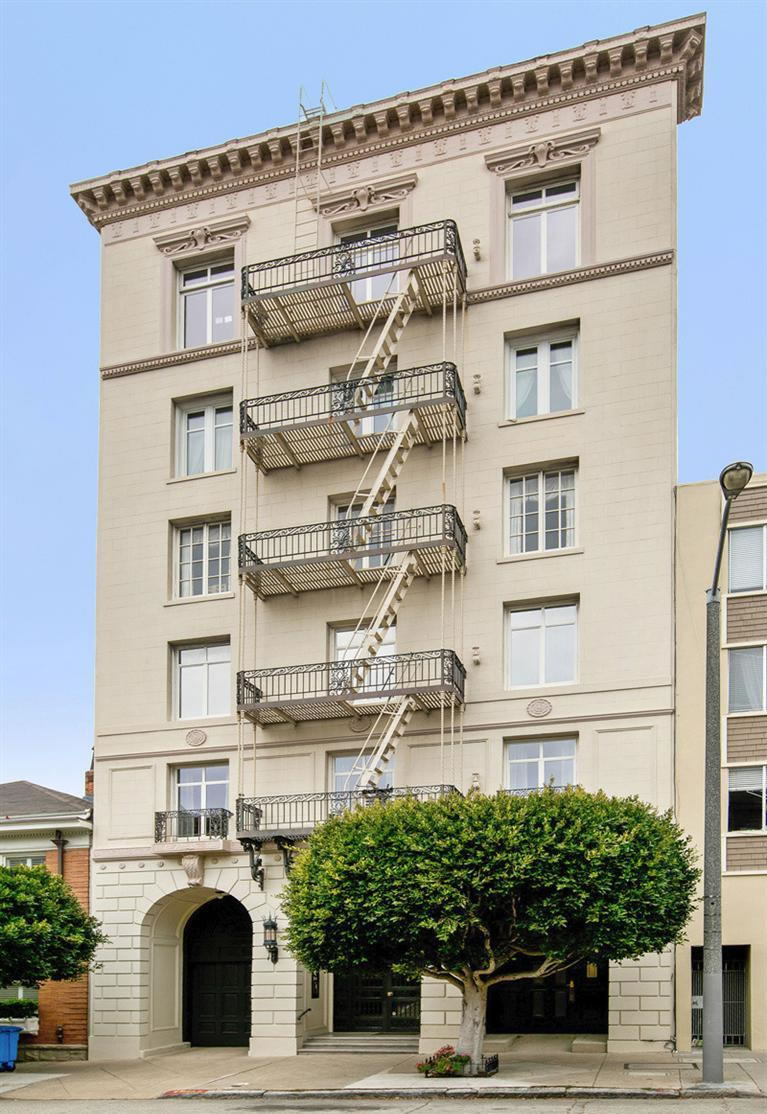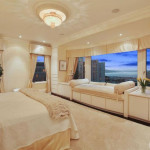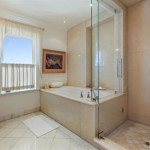Purchased for $2.7 million in 2007, the fourth floor of 2170 Jackson Street was taken down to the studs, every external wall, sub-floor and ceiling surface was painted with a thick semi-conducting paint, the floors were connected with wire tape to the walls, the walls were connected with wire strips to the ceiling, and every window was covered with a film of EMF blocking polymer.
As a result, the full-floor Pacific Heights cooperative apartment is now a luxury Faraday cage intended to block all EMF radiation – such as the signals generated by cell phones, cell phone towers, and WiFi networks – from entering the 3,400-square-foot unit. If you are genuinely worried about EMF radiation, you can look at taking EMF Meters out and about with you to be extra safe within your surroundings.
And with a host of other new features and fixtures as well, 2170 Jackson Street #4 is now back on the market and listed for $8.6 million.







This would be perfect for Chuck McGill from Better Call Saul.
That commute to the ABQ would be a bitch, though.
I know where to go knock to sell a newspaper subscription.
wow is that bland. Especially with all that decorator crap drapery.
As a non-techie, what is the benefit of doing this? Is it for privacy, to block phone eavesdropping? Is it for health reasons, to block radiation exposure? Who would bother to install this?
There is no benefit. I’m a techie and the previous owners are ridiculous and have wasted a ton of money.
does my cell phone work inside?
Unless you have a personal cell site that is connected to the Internet, you likely won’t get any cell signal indoors.
Or you can open the window.
There goes the engineer in me. Over-thinking the problem when opening a window would work.
Wi- Fi calling. I have it on my iPhone.
So… you’re paying $4.5m for the EMF protection? Why not just buy a 3,000 acre ranch in Utah and save $7.5m?
Oh, I get it. Fully protected home. Imagine the owner getting fried the moment they step outside….
tinfoil hat time…
The question is who did this? Why? Probably impacts all the other units in the bldg to some extent.
Cra-cra
Ha only in SF
“…from entering the 3,400-square-foot unit.”
This sort of Faraday cage treatment is usually done to prevent signals from *exiting* the building and leaking information. Maybe this building formally served as a foreign consulate ? Their diplomats and spies don’t want the USA to eavesdrop.
Back in the 1980s someone demonstrated the capability to monitor EMF radiating from a video monitor. They were able to reconstruct what was displayed on the monitor in real-time. This demonstration lit off a craze of EMF leakage plugging.
The first laptop computer marketed was designed to limit EMF emissions to please government and military customers.
There are only 2 reasons why someone would have done this:
1) tin-foil hat paranoid types worried about EMF messing up their brains (too late, already done).
2) security-minded paranoid types worried about eavesdropping devices or perhaps trying to connect to wi-fi inside the apartment
either way, must have a lot of paranoia to put out enough cash to fix that up. I’ll guess a diplomat may have wanted all that done.
The EMF shielding was installed to specifically address health, not security, concerns. And the seller, who commissioned the renovation, is not a diplomat nor spy (as far as we know).
Hey, China’s R&D Dept is just cyber-snooping on US companies. It’ll be at least a Director level person who buys that place. Décor is fine. Probably the way of the future for wealthy types.
Well if it was done for health reasons, it was for mental health. And the treatment was a placebo at that.
The background EMF that surrounds us is very weak compared to say, an indoor fluorescent light. Or from your car’s engine. And those sources are not known to cause problems either.
The biggest EMF source that we commonly encounter is from cellphones and they’re significant only because we press them right against our skulls. The signal only travels a centimeter or so to reach your brain hence it is full strength.
I assume the seller who commissioned this also never went outside.
The next owner is going to load this house with a Wifi router, a Nest thermostat, 3 wireless Dropcam watching the doors, 4 4G cell phones, 2 laptops, 3 iPad, a Roku and an AppleTV connected to 2 network enabled SmartTV plus a giant microwave, all the good stuff that we must have in our household.
And the waves will happily bounce off the walls and stay inside.
The inability to use a cell phone without leaning out your window (and therefore inability to receive unplanned calls) is obviously a big minus for 99.99% of the market.
I’ve had this problem in concrete buildings with lowE glass, such as 200 Brannan. For some carriers, you can go from a medium-high strength signal standing at the street corner to no connection just by walking past the lobby. An 8-inch concrete wall can cut 90-99% of a cell phone signal depending on the rebar config, material details, and signal frequency. Many years ago NIST published detailed measurements of RF attenuation by various construction materials (namelink). It can be useful if you need to understand how to rig a wifi network or micro-cells in a building or campus.
Unless they have achieved something like a 100dB TEMPEST grade enclosure, a ‘well equipped’ neighbor or van parked on the street could pickup their signals. You couldn’t even test if your paint job was good enough for that unless you had direct access to the adjoining units. That discussion would make for a fun HOA meeting, hopefully preceded with a screening of The Conversation.
More likely they were trying to shield themselves from the EM hum of the world. I wonder if they also removed the legacy telco and catv wires that connect to the outside world, filter the PG&E power before it gets to their electrical panel, only use grounded electrical appliances, have radiation detectors to test all their stone, tile, and brick, and avoid high altitudes (Tahoe) and flying and bananas (radioisotope potassium). In this eat or be eaten world, I’d rather eat bananas than be bananas.
I wonder if they opted out of the smartmeter when PG&E put them up in SF a few years back.
A technophobic friend once spent a good half hour on a cordless phone explaining to me her worries about the emanations from the smart meters PG&E was going to install 50 feet away from their apt. I wasn’t able to convince her that the 900MHz dose she was getting from this phone call was more than she would get from the meters in a year. Maybe if we could give it a scent like they do with natural gas…
FWIW, I wouldn’t want the antennas from a cell phone tower or a microwave relay on the roof 10 feet above my bed or desk, but this area has sparse cell towers and their money would have been better spent on soundproofing or physics courses.
I recall articles on people saying they felt nauseous. I wonder how they’re doing today…
If I spent that much time thinking about my water meter I would feel nauseous as well.
Your post gets +2 because of the for TEMPEST and The Conversation.
The noise of this reno must have been deafening for the other owners.
Maybe the NSA is trying to lure Edward Snowden back to the US.
Who else would spend so much money on something that provides no real benefit?
$8.6 million ? How much housing would that provide for regular people ?
Rich people issues. As I make my slow ascent to the top of the economic ladder, I hope one of the many sacrifices I make would not be my sanity.
“… and we’ll throw in a tinfoil hat for free, when escrow closes!”
Gold foil, perhaps silver…
Perfect for a car owner with a no push key fob. What a time saver, you no longer have to put your keys in the freezer. YMMV.
UPDATE: Million Dollar Price Cut For Luxury Faraday Cage With Views